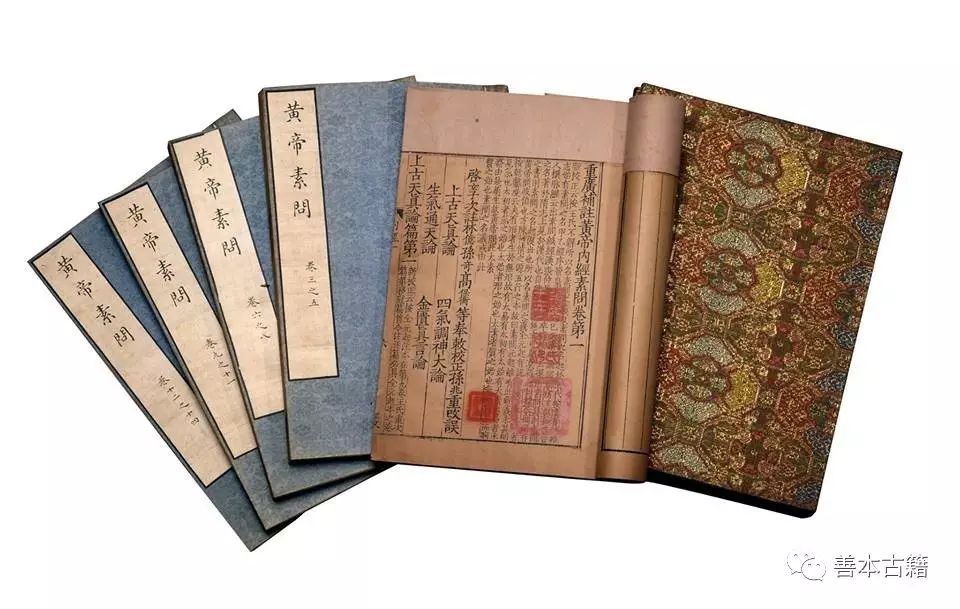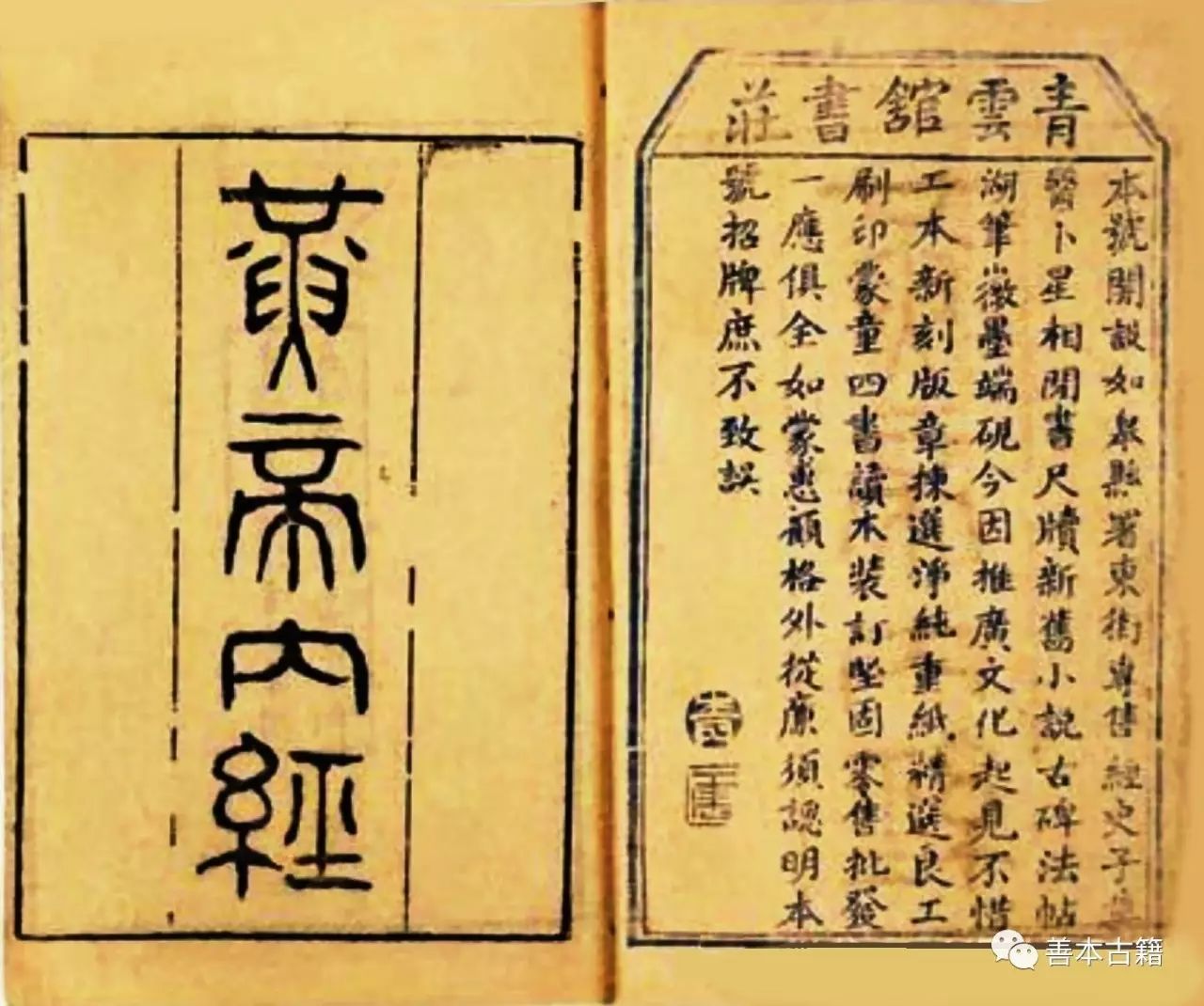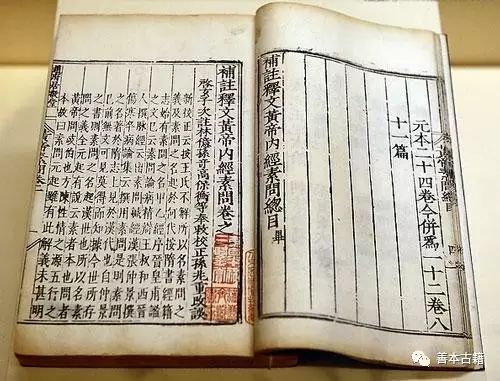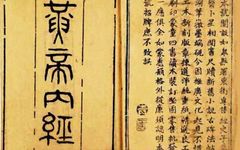
【Introduction】

The Huangdi Neijing (黄帝内经), or Yellow Emperor’s Inner Canon, is one of the four classic texts of traditional Chinese medicine (TCM) in China, alongside Shanghan Lun (伤寒论), Jinkui Yaolue (金匮要略), and Wenbing Tiaobian (温病条辨). It is the first major work named after the ancestor of the Chinese nation, the Yellow Emperor, and is the earliest existing medical classic in the treasure trove of Chinese medicine. This monumental work studies human physiology, pathology, diagnostics, treatment principles, and pharmacology. Theoretical foundations established in this text include the theories of Yin-Yang (阴阳), Five Elements (五行), Pulse Diagnosis (脉象), Zang-Fu Theory (藏象), Etiology (病因), Pathogenesis (病机), Symptoms (病症), diagnostic methods, treatment principles, Health Preservation (养生学), and Qigong (运气学). Its medical theories are based on ancient Chinese philosophical concepts, reflecting the dialectical materialism of ancient China. The Huangdi Neijing contains 13 established formulas, 10 of which are recognized as traditional Chinese medicines, and includes various forms such as pills, powders, wines, and elixirs. It is regarded as the theoretical classic of early Chinese medicine, commonly referred to as the Neijing (内经). The earliest records of it are found in Liu Xin’s Qilüe (七略) and Ban Gu’s Han Shu: Yiwen Zhi (汉书·艺文志), originally consisting of 18 volumes. The medical sage Zhang Zhongjing compiled it into the Shanghan Zaibing Lun (伤寒杂病论) using the Suwen (素问), Jiu Juan (九卷), and Baishi Nan (八十一难). During the Jin Dynasty, Huangfu Mi referred to it as the Jing of Acupuncture (针经) and the Suwen as the Ling Shu (灵枢). By the Song Dynasty, Shi Songxian’s family preserved and published the Ling Shu, indicating that the Jiu Juan, Jing, and Ling Shu are essentially one work with multiple names. After the Song Dynasty, the Suwen and Ling Shu became the two main components of the Huangdi Neijing.

The Huangdi Neijing was completed approximately 2000 years ago during the Qin and Han dynasties. Its profound scientific explanations encompass not only medicine but also astronomy, geography, philosophy, anthropology, sociology, military science, mathematics, and ecology, reflecting the scientific achievements of humanity. It is astonishing that some of the profound insights in the Neijing, articulated over 2000 years ago, reveal many modern scientific achievements that are currently being validated. Renowned ancient Chinese physicians such as Zhang Zhongjing, Hua Tuo, Sun Simiao, and Li Shizhen were deeply influenced by the thoughts of the Neijing, diligently studying it and mastering its essence, ultimately becoming famous physicians in Chinese history.
【Value】
As the theoretical foundation and essence of traditional Chinese medicine, the Huangdi Neijing has played an indispensable role in the nearly two-thousand-year history of the Chinese nation. For instance, during the outbreak of the plague in Europe about 700 years ago, a quarter of the European population lost their lives, while China, despite experiencing epidemics over the past two millennia, has never recorded such tragic losses as seen in Europe. This highlights the significant role of TCM and the Neijing. The completion of the Huangdi Neijing marks a new stage in the evolution of Chinese medicine from empirical to theoretical medicine. It summarizes the medical achievements prior to the Warring States period and provides theoretical guidance for the development of Chinese medicine thereafter. It lays the theoretical foundation for TCM in aspects such as holistic view, contradiction view, meridian theory, Zang-Fu theory, etiology and pathogenesis, health preservation, preventive medicine, and diagnostic and treatment principles, having a profound impact. The innovations and contributions of famous physicians throughout history are often closely related to the Huangdi Neijing.
【Classification of the Series】
The Huangdi Neijing, abbreviated as Neijing, originally consisted of 18 volumes. Among them, 9 volumes are titled Suwen; the other 9 volumes, which were unnamed during the Han and Jin dynasties, were referred to as Jiu Juan or Jing, and after the Tang Dynasty, they were called Ling Shu. It is not the work of a single person or time, with the main parts formed from the Warring States to the Eastern Han period. Each part consists of 81 chapters, totaling 162 chapters. The Suwen primarily discusses the laws of natural changes and the relationship between humans and nature; the core content of the Ling Shu is the theory of Zang-Fu and meridians.
The Suwen has various versions throughout the Han, Wei, Six Dynasties, Sui, and Tang periods. It has been cited in the works of Zhang Zhongjing, Wang Shuhe, Sun Simiao, and Wang Tao. The main versions include: (1) The earliest annotated version from the Qi and Liang dynasties (6th century AD), which is the earliest annotation, but the sixth volume was lost, leaving only eight volumes. This version was cited by Wang Bing during the Tang Dynasty and Lin Yi during the Song Dynasty, but was lost after the Southern Song Dynasty. (2) The Tang version annotated by Wang Bing, who used the earlier annotated version as the base for his annotations in the first year of the Tang Baoying era (762 AD), supplementing the lost seventh volume with seven chapters of the “Great Discussion” that he claimed to have obtained from his teacher’s secret collection. During the Northern Song Dynasty, the Medical Book Correction Bureau was established, and Lin Yi and others conducted corrections based on Wang Bing’s annotations, naming it Chongguang Buzhu Huangdi Neijing Suwen, which was published and standardized.
The Ling Shu, also known as Jiu Juan, Jing, Jiu Ling, and Jiu Xu, has various names due to long-term copying and transmission after the Han and Wei dynasties. The ancient version of the Jing cited by Wang Bing in the Tang Dynasty is fundamentally the same as the ancient version of the Ling Shu, indicating a common ancestor. However, it differs from the Ling Shu version discovered by Shi Song in the Southern Song Dynasty (which is the existing version). It is recorded that during the Northern Song Dynasty, a version of the Jing was published in Korea, but no book can verify this. By the early Southern Song Dynasty, various versions of the Ling Shu and Jing were lost. In the 25th year of the Shaoxing era (1155 AD), Shi Song corrected and expanded his family’s collection of the Ling Shu into 24 volumes, adding phonetic annotations, which were published. Thus, the Ling Shu version was basically standardized, replacing various versions and has been repeatedly published and circulated to this day.
The Huangdi Neijing emphasizes a holistic view, stressing that the human body is an integrated whole and that humans are closely related to their natural environment. It uses the theories of Yin-Yang and Five Elements to explain physiological and pathological phenomena, guiding diagnosis and treatment. It views the unity of opposites of Yin and Yang as a universal law governing the generation, development, and change of all things in the universe. Under normal circumstances, the body maintains a balance of Yin and Yang, and once this balance is disrupted, illness occurs. It emphasizes the influence of mental and social factors on the body and diseases, as well as disease prevention, while opposing superstitions. It comprehensively summarizes the medical achievements prior to the Qin and Han dynasties, marking the stage of theoretical summarization in the development of Chinese medicine. This book holds a high position in Chinese medicine, and all accomplished physicians throughout history have valued it. Some content has been translated into Japanese, English, German, French, and other languages, significantly impacting the development of medicine worldwide.
If you wish to participate in discussions related to ancient texts, please reply to the 【Shanben Ancient Books】 public account message: Group Chat
Welcome to join the Shanben Ancient Books Learning and Exchange Circle

